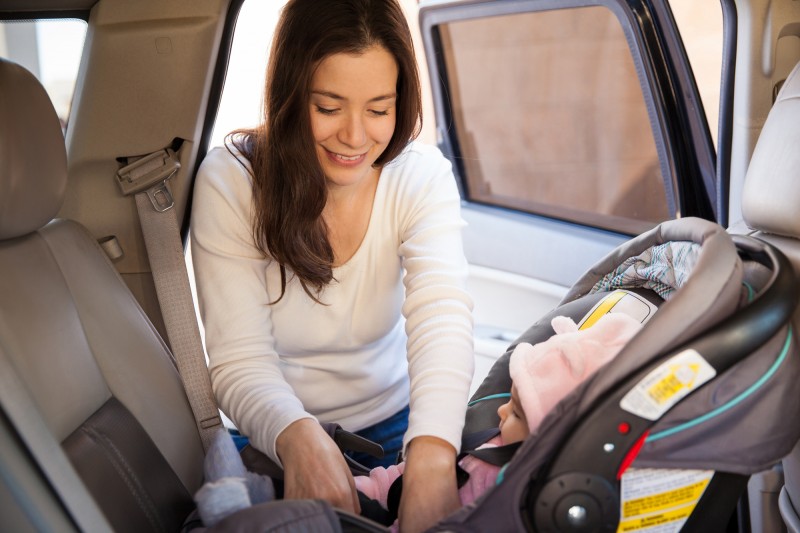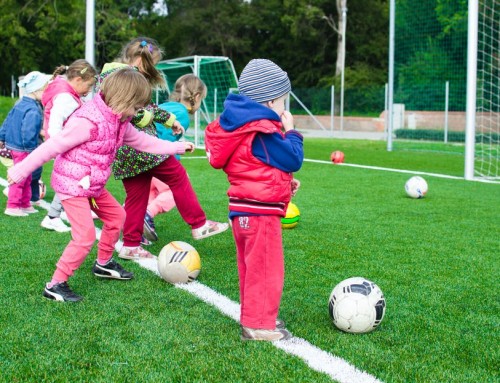There’s nothing like getting out of the house with your little one to see friends and family or just to take care of a few errands. But, wherever you and your child are headed, you have to make sure you’re practicing the best car seat safety possible.
The last thing you want is to get in an accident and not be properly prepared to protect your child. No matter how much reading up you’ve done about car seats, it’s always good to learn more about what to do when installing a car seat, securing your child in it, and upgrading from one seat to another.
To make sure your car seat use is super safe, check out the 10 best practices listed below.
1. Keep the Straps Snug
One of the most common mistakes parents make with car seats is not securing the straps correctly. It doesn’t matter how much your kid fusses when you’re putting them in the seat or what they say as you’re driving–safety comes first.
The straps should be secured right around the collarbone area. When they sit lower towards the belly, they’re not as ready to protect your child in the event of a crash.
More so, you shouldn’t be able to lift the straps even if the clip is on the collarbone. The snugger the fit, the better your child is protected.
2. Rear-face as Long as Possible
Another thing that happens all too often is switching from rear-facing car seats to front-facing seats too early. Your child’s head and spine are much better protected when they are facing the back of the car rather than the front.
If he or she is in the stage when they’re super attached to you or they just tend to fuss while in the car seat, put a mirror on the seat so you can see each other. This allows you to keep an eye on what they’re doing and how they’re feeling without compromising their car safety.
You can also look into the innovative possibilities of using a swivel car seat–like the ones in this guide.
3. Put the Car Seat in the Safest Spot
Whether you get a swivel car seat or stick to the standard design, make sure you put it in the right place. The safest spot for a baby car seat is actually in the middle section of the back seat, not the seat behind the front passenger.
Think about it: you can get side-swiped or t-boned from either side of the car, and you won’t know which one it is until the collision happens. When you put your child’s car seat in the middle, though, you don’t have to take a gamble on whether or not they’ll be hit directly.
4. Secure the Seat in Every Way You Can
If you do move your car seat to the middle make sure you secure it nice and tight. The best way to do this in this part of the car is to use the middle seatbelt.
For car seats that are on the right-hand side of the vehicle, though, there should be a tether strap to help you secure the seat. This comes in every car made in America, but not every parent knows what the strap is for. It’s meant to attach to the top of your child’s car seat to help keep it in place as you cruise all around town.
5. Get Your Seat Checked
Just when you think the car seat is as secure as it can be, think again. Call a professional to check it out and see how well you’ve prepared your baby’s spot in the car.
This “professional” can be a certified child safety expert or maybe just another mom you know well and trust. The check may be super intensive or a simple look-over, but still, it’s nice to have another pair of eyes tell you you’ve done it right. Even better, you’ll be glad to have someone spot a safety opportunity if there is one!
6. Educate Everyone in the Family About Car Seat Safety
Keep in mind you’re not the only person in charge of your child’s car safety. Talk to your spouse about the importance of proper car seat securing and make sure they know how to do everything right all by themselves.
Have a little talk with your older children, too. Tell them to behave and set a good example for the toddler in the family as he/she starts to get older and want to be more like their siblings. You can also give older children the responsibility of sitting in the back with the baby to watch and entertain them as you drive.
7. Make Sure the Seat Is an Appropriate Choice for Your Child
Speaking of older children, notice when your little one starts to become bigger and more active. This will help you recognize when it’s time to upgrade from one baby car seat to the next.
The most important thing here is to pick the right seat, though. Your child’s height and weight play a big role in the decision, and even the car you drive and whether or not you have another car seat might have an effect, too.
8. Understand When It’s Time for a Booster Seat
Once you’ve gone through a handful of car seats, it’s time for a booster seat. Your child might complain about not being a “big boy/girl” and sitting like everyone else, but their safety comes first.
Booster seats ensure their spine and head are in the best position for them to be comfortable and stay safe. They may not seem like the coolest thing to your little one, but they’re incredibly important.
9. Encourage Booster Seat Use Until Your Child Is Ready for a Regular Seat
Your child should get used to a booster seat after a little while. At least, that’s the hope considering they’ll be using it for a while! Encourage booster seat use for as long as you can until it’s not necessary anymore.
This depends on your child’s growth. They may need an extra year or so to reach the appropriate height, and that’s okay.
10. Drive Safely
You can practice all the car seat safety you want, but if you’re driving like a maniac, you’re not keeping your child safe. Put the phone down whenever you get into the car and abide by all the road rules in your state. Don’t speed, and try not to weave in and out of traffic, either.
Car Seat Safety, Easy Healthy Dinners, and More Mom Tips
Hopefully, these car seat safety tips have given you a little more confidence to go out on the road with your little one. For new moms and those with children already, it can be a bit nerve-wracking to make sure you’re doing everything right.
The best thing for you to do is relax and use all the knowledge available to you. This applies to your child’s safety on and off the road, their healthy growth, household management, and more.
For additional tips and tricks to help you navigate mom life, click here.











